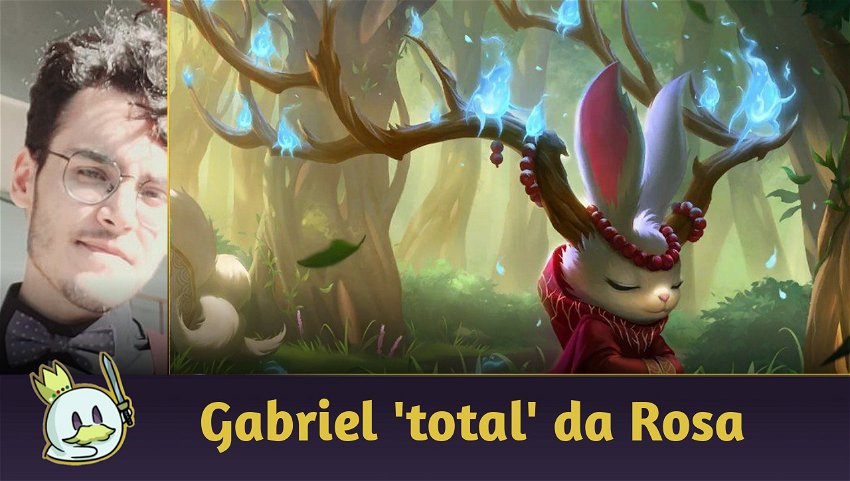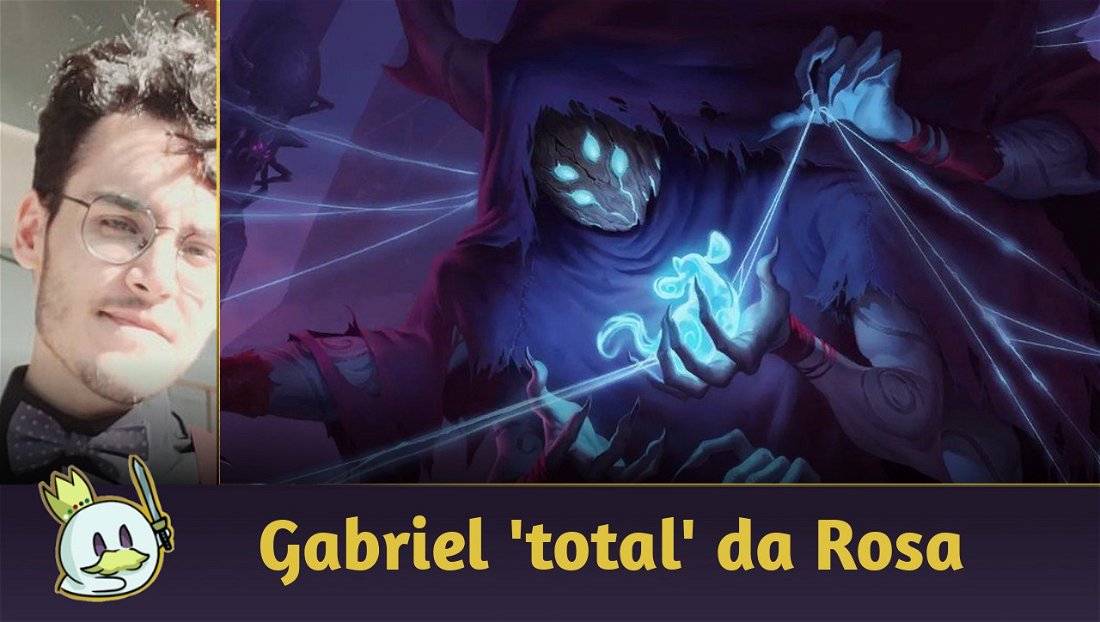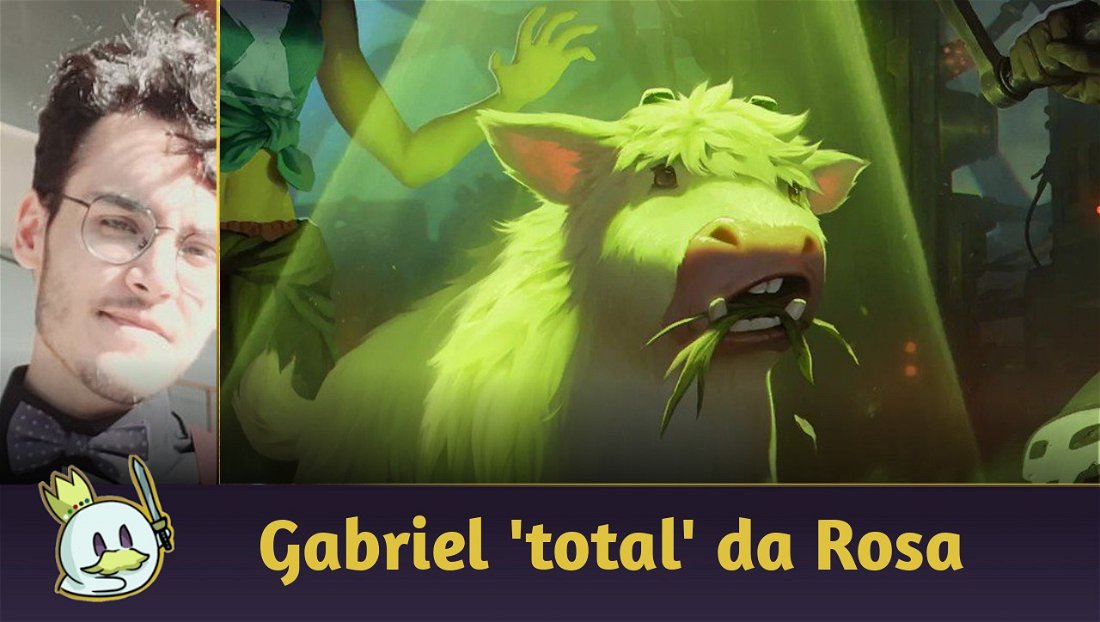Introduction
Carrying on with the series of articles covering "forgotten cards you've probably never seen", today we'll discuss Ionia, a region that divides opinions - you either hate it or love it.
In these articles, I always choose 5 cards which aren't necessarily weak, or bad, but were forgotten as time went on, and don't really make a lot of difference. If they ceased to exist, no one would notice they were gone.
If you want to see other articles I wrote within this theme, click here to check out the top 5 most forgotten Shadow Isles cards.
Ad
Please keep in mind this article was centered around the competitive scene, and ranked queues (I don't play Path of Champions, unfortunately). It is also based on my 4-year experience playing and casting LoR professionally.
I invite you all to post in our comment section your own list of the top 5 most forgotten Shadow Isles cards. Let's go!
5 - Memory's Cloak

To start our list, we have Memory's Cloak - a deny card introduced in the Beyond the Bandlewood expansion, in Ahri's package.
It is quite weird to imagine this card as part of Ahri's package, considering it is a spell that doesn't Return anything nor helps Elusive followers, as most Ahri cards do. Memory's Cloak reinforces Ionia's region identity as a region that denies spells, but it doesn't bring anything of value to any Ahri deck directly.
If you look at the cards released in this expansion, it is visible that Ionia wasn't well-explored (even though Ahri lists were the best in the game at the time she was released); these cards connect very little with the champions they were released with, and, instead, they are more broad, and cover mechanics like "attacking with a lot of units" (Grandfather Fae), drawing cards (Sai'Nen Thousand-Tailed), and denying spells (Memory's Cloak).
This can be explained by the fact that Bandle City itself was revealed in this set, and Ionia got two champions: Ahri and Kennen. Even though they are part of the same archetype, their support cards are quite different theme-wise.
However, all this doesn't really explain the main reason why Memory's Cloak is such a forgotten card. Even though it is a deny spell, which is usually considered a strong type of spell, the competition between them has always been tough.
Even Rite of Negation is a competitor on par with the rest, despite the fact it is from a different region, because it works in a much more dynamic way than Memory's Cloak. Actually, many decks have historically used Shurima as a secondary region only because they wanted to use Rite of Negation, something that happens with Deny itself and Nopeify! too, but doesn't happen with Memory's Cloak.
It is quite ironic that Memory's Cloak isn't a memorable card.
Finally, this card's effect is the main reason why it isn't as famous as its other "deny" sisters: you can only play Memory's Cloak to deny spells that target an ally. This means you can't stop a The Ruination, for instance, or an Atrocity targeting your Nexus. And, as a result, this card was always the worst of the deny spells, and was forgotten by everyone.
4 - Woodland Keeper

This is another card from the Beyond the Bandlewood expansion.
Woodland Keeper is an Ahri follower whose main idea is to summon it and Return it every turn to abuse its mechanic, which gives it Elusive and attack power. This, in theory, really matches Ahri's Return archetype.
Ad
As we all know, in practice, this game style doesn't work. The main reason behind this is that Ahri Kennen decks focused a lot more on summoning cheap allies, like Dancing Droplet and Kennen itself, to level up its champions as fast as possible.
The champions in this deck were its main win condition, and a card that costs 3, like Woodland Keeper, as incredible as it sounds, is too expensive for this type of archetype, which always needs to bank enough mana to Return its units if needed.
Another reason why this card wasn't popular in Ahri decks is that its effect only lasts one turn, which forces you to concentrate your Return resources on it to keep an aggressive game rhythm. This won't always be smart, considering the greatest strength of Ahri decks has always been to expand your board with several Elusive units, instead of focusing all your damage on only one of them.
Not to mention, Ahri herself forces you to have a board full of units to extract as much as you can from her level 2 effect, the one which makes her move around the board during combat.
Another reason that significantly helped us forget about Woodland Keeper is that Ahri decks didn't get any support throughout the years, and this archetype evolved very little since it was nerfed. This made Ahri and her cards even more uninteresting, and, at the end of last year, Ahri was even considered the worst champion in Standard by competitive players. Consequently, we forgot about her and Woodland Keeper.
3 - Shadows of the Past

This spell was released to the game in the Empires of the Ascended expansion with Shurima itself and Irelia.
At the time, Ionia was transitioning from a passive region to an aggressive combo region with Azir Irelia decks. This archetype's main mechanic was creating cards and attacking with these created cards, which we usually call "tokens" in card games. "Tokens" are units that you create mid-game, as they aren't in your main deck, just like the Blades and Living Shadows that are created from Shadows of the Past.
This means Shadows of the Past, whether you like it or not, interacts really well, theme-wise, with the expansion it was revealed in, considering it does create tokens. But, unfortunately, we all know this spell has never seen play neither competitive nor in the ranked queue.
The main reason behind this is that, when this card was revealed, Returning all the units on your board wasn't a smart decision, considering most Ionia decks used "engines", cards that need to stay on the board for your deck to work properly.
These cards don't attack nor block; they remain on the backrow passively, and activate their effects as the game goes on.
The best example of an "engine" is Azir, which only attacks after he levels up. Another example is Field Musicians.
Summoning these allies again after playing a Shadows of the Past would be a great waste of time and tempo for Ionia players. Not to mention, Shadows of the Past's effect isn't even useful most times, and this might be the most significant reason why this card is extremely forgotten.
Ad
Many times, Returning your entire board can be worse than just not doing that.
A place for Shadows of the Past would then be in Hecarim Zed decks, famous in Eternal. But, even in these lists, you'll realize that you won't always play many units, and you'll rarely be able to create enough Living Shadows for them to be a threat. It is much better and easier to create countless Shark Chariots every time you attack.
Throughout the years, we also didn't get many cards that help the Ephemeral archetype, which helped us forget all about Shadows of the Past even more. This is because Ephemeral decks are all closed archetypes, and only a handful of players tend to explore new cards for them.
2 - Twin Wind Technique

In our second spot, we have Twin Wind Technique, revealed in The Darkin Saga expansion alongside Master Yi.
One of the issues with this card is that its effect is a bit difficult to understand, and sometimes you need to read this card several times to get it. Whether you like it or not, this helps us forget about this type of card, considering new players who don't understand its effect tend not to explore them.
The confusion is about which unit you're Stunning with its effect: is it the enemy follower on the enemy board, which you copied, which is being Stunned, or is it the Ephemeral copy of an enemy that is now on your board that is being Stunned?
The answer is that the Stunned unit will be the enemy unit, which is on the enemy board, and not your identical Ephemeral copy, which is on your board. Confusing, isn't it?
This card's effect, despite confusing, is quite interesting, and can even be useful in a few matchups, such as, for instance, against Overwhelm decks, as you can copy a gigantic enemy follower that has Overwhelm and Stun it at the same time. In practice, we know this doesn't work as well as we'd expect, and a Concussive Palm practically does the same as Twin Wind Technique, but at fast speed.
One of the main reasons why this card is forgotten is because it is a slow-speed spell, which means, it forces you to play it proactively most times, and not as an answer to another play. We all know that fast-speed spells that have similar effects, even if they're even weaker than slow-speed spells, tend to retire these slow-speed spells. The best example of this is the one we just mentioned with Concussive Palm, which has an effect that is similar to Twin Wind Technique, and, because it is a fast-speed spell, tends to make Twin Wind Technique useless because it is a slow-speed spell.
Another argument to explain why this card is forgotten is that Ionia usually requires a certain synergy between the cards on its board for their decks to work 100%. This means it isn't very common to copy cards from other regions with Ionia, as you'll rarely be able to use them. Even if you copy a strong enemy follower, you'll only be able to attack with it once, or defend with it once, if you use Twin Wind Technique, considering you'll create an Ephemeral copy. Additionally, you'll hardly be able to extract as much as you can from the card you copied.
Ad
Notice that Ionia works really well with Elusive units, and "engine" cards (as we've already mentioned in this article), which usually force you to play some combo to work 100%. So, copying enemy units isn't always an interesting choice for Ionia lists.
However, copying allied units is super interesting. As you can imagine, because it costs 4 mana, and it is a slow-speed spell, Twin Wind Technique gives your opponent a broad window to answer your combo if you do use it like this.
Imagine that, to play a Twin Wind Technique and a Deny on the same turn, you need to use 8 mana. If you want to copy an ally, like, for instance, Keeper of Masks, you could just use 2 mana to play another Keeper of Masks on the board, or 2 mana to play another unit like Greenglade Duo. This means that hardly the cost of your units will be higher than the cost of copying them with Twin Wind Technique, and this is one of the reasons why this card is so forgotten.
1 - The Spirit of Wuju

As usual, the first spot in these lists is chosen through this method: I look at my collection and choose the card that I (after playing 4 years professionally and also casting LoR tournaments) can't even remember what it does, and I usually ask myself if I have ever seen it in my life.
Today's pick was The Spirit of Wuju because I couldn't remember what it does when I saw it in my collection.
This card was also released in The Darkin Saga expansion, which leads me to believe this expansion wasn't really interesting for Ionia. If we take a closer look at Ionian cards from this time, besides its decks, it is clear it wasn't one of the most explored regions.
Master Yi cards didn't please many players, and it is one of the most unpopular expansions in all of Ionia. Cards like Jun, the Prodigy, Disciple of Doran, and The Witness haven't impacted the game at all, just like The Spirit of Wuju, which, out of all of these, is the most forgotten one.
This unit's main goal is to help you draw cards consistently, and reduce the cost of The Spirit of Wuju by 2 to draw a spell when you play it.
The main problem, however, is that Master Yi's Flow archetype has never been strong nor popular. Actually, this champion itself has never been strong nor popular because he combines several archetypes (Flow, equipment, and Spellslinger decks) all in one champion, and he isn't good at either of them.
Akshan Master Yi decks have always been too niche and not that well-explored, and, even in these lists, your options to draw cards have always been much better than The Spirit of Wuju.
We're talking about Preservarium and Warlord's Hoard itself, from Akshan's landmark.
Activating Flow is an incredibly weird mechanic; many times you, as a player, won't control which turns it will be active, as you'll use most of the spells in these decks as an answer to your opponent. This means The Spirit of Wuju always needs to be in your hand in the turn right after you answer your opponent by playing two spells or more.
Ad
In practice, you'll realize that, usually, these Flow turns are better when you use cards that have passive effects, like Eye of the Dragon, or Master Yi, which activate Flow on the board.
Unworthy Soul and Caustic Riff are the other few cards that work really well even though they're not passive Flow cards simply because their effects are extremely strong. As The Spirit of Wuju's effect is relatively mediocre, it will hardly be useful when you play it on the board.
Not to mention, it doesn't have any keywords, and it has a relatively aggressive body, which is incredibly different from Ionia's region identity because this region prefers units that are more defensive (when they're not Elusive). If it could draw a spell that costs a certain amount of mana, it might be more interesting, but, for now, it will only be forgotten by players, and wait for a day it is finally played in a meta deck.
Final Words

If you read this far, thank you. I hope you had fun.
Don't forget to share.
See you next time!









— commentaires0
Soyez le premier à commenter